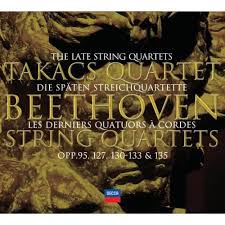 The greatest composers serve as visionaries and prophets, giving us a glimpse at a higher reality. Looking back through music history, many composers seem to have experienced a sharpening of this sense of vision in the final years of life. The Ninth and final symphonies of Mahler and Bruckner are filled with mystery, foreboding and spirituality. The first movement of Bruckner’s Ninth is marked “Feierlich“ (Solemn) and ” misterioso.” Schubert’s Ninth Symphony, “The Great”, is a sublime Romantic statement which, in scale, eclipses all of his previous classical symphonies. In his book, Free Play: The Power of Improvisation in Life and the Arts, Stephen Nachmanovitch writes about late Mozart:
The greatest composers serve as visionaries and prophets, giving us a glimpse at a higher reality. Looking back through music history, many composers seem to have experienced a sharpening of this sense of vision in the final years of life. The Ninth and final symphonies of Mahler and Bruckner are filled with mystery, foreboding and spirituality. The first movement of Bruckner’s Ninth is marked “Feierlich“ (Solemn) and ” misterioso.” Schubert’s Ninth Symphony, “The Great”, is a sublime Romantic statement which, in scale, eclipses all of his previous classical symphonies. In his book, Free Play: The Power of Improvisation in Life and the Arts, Stephen Nachmanovitch writes about late Mozart:
[quote]In creative work we play undisguisedly with the fleetingness of our life, with some awareness of our own death. Listen to Mozart’s later music-you hear all its lightness, energy, transparency, and good humor, yet you also hear the breath of ghosts blowing through it. Death and life came to be that close for him. It was the completeness and intensity with which both primal forces met and fused in him, and his freedom to play with those forces, that mad Mozart the supreme artist he was.[/quote]
Beethoven’s Ninth Symphony, with its use of chorus and solo voices, redefined the symphony and set a monumental and intimidating example for composers who followed.
Equally interesting is the music Beethoven wrote after the Ninth Symphony: the Late String Quartets (Op. 127-135) which remain some of the most mysterious and profound music ever conceived. This music is so far out that, at times, you might swear that you’re listening to something from the twentieth century. Let’s listen to the Takacs Quartet performing Beethoven’s String Quartet No. 15 in A minor, Op. 132:
1. Assai sostenuto- Allegro:
https://www.youtube.com/watch?v=1ieGs_I55Ec
2. Allegro ma non tanto:
https://www.youtube.com/watch?v=VD2qfBGix0M
3. Molto Adagio– Andante – Heiliger Dankgesang eines Genesenen an die Gottheit, in der lydischen Tonart. Molto adagio – Neue Kraft fühlend. Andante – Molto adagio – Andante–Molto adagio. Mit innigster Empfindung:
https://www.youtube.com/watch?v=5WCEskJpfM8
4. Alla Marcia, assai vivace (attacca)
https://www.youtube.com/watch?v=QvAx_ku_fqc
5. Allegro appassionato – Presto
https://www.youtube.com/watch?v=V_VUbDIwEH4
For me, one of the most amazing aspects of this music is the way it seems fully to transcend style and historical period. There are echoes of the Ninth Symphony, especially in the operatic, “wordless” violin recitative which forms the bridge between the fourth and fifth movements (36:10). In the final movement of the Ninth, Beethoven quotes the themes of each preceding movement, musically rejecting each and moving forward with the transcendental “Ode to Joy.” In a similar way, with these quartets, Beethoven moves past all of his earlier works into strange, new musical territory.
Go back and listen to the third movement (17:24) one more time. Having recovered from a serious illness, Beethoven titled this movement “A Convalescent’s Holy Song of Thanksgiving to the Divinity, in the Lydian Mode.” The music abruptly alternates between slow, chorale like sections in modal F and faster sections (“with renewed strength”) in D. At times there is an almost child-like playfulness. It’s powerful music which goes beyond words.
[typography font=”Cantarell” size=”28″ size_format=”px”]The Great Fugue, Op. 133[/typography]
[quote]It is an absolutely contemporary piece of music that will be contemporary forever.- Igor Stravinsky[/quote]
Here is the Takacs Quartet performing the mind-blowing Great Fugue, Op. 133. Beethoven originally intended it to be the final movement of Quartet No. 13. He ended up replacing it with another movement. After you listen, you’ll probably get a sense of why this intense music had to stand alone. Listen to the complex imitative counterpoint. What do you think Beethoven is saying with this music?
https://www.youtube.com/watch?v=xjUh11EPGcM
[button link=”https://itunes.apple.com/nz/album/beethoven-late-string-quartets/id467407924″]Find on iTunes[/button] [button link=”https://www.amazon.com/Late-Quartets-Ludwig-van-Beethoven/dp/B00067R3BG”]Find on Amazon[/button]

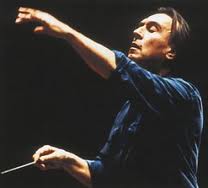 Renowned Italian conductor Claudio Abbado passed away yesterday at the age of 80. You can read about his life
Renowned Italian conductor Claudio Abbado passed away yesterday at the age of 80. You can read about his life 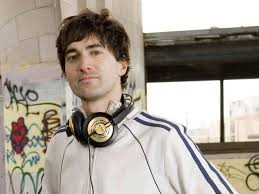
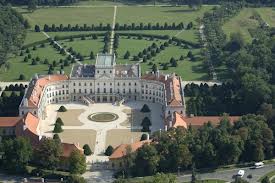
 There’s an interesting irony at the heart of musical performance. As musicians, we spend countless hours in the practice room in order to achieve the highest level of technical control. Technical assurance gives us the freedom to let go, enter “the zone” and allow the music to come to life. We cherish the rare, exhilarating performances which rise above “good” or “technically solid” and tap into a higher energy. At these moments the music almost seems to be playing the musician. Discovering the ability to let go and overcome ego is a lifelong challenge for all of us.
There’s an interesting irony at the heart of musical performance. As musicians, we spend countless hours in the practice room in order to achieve the highest level of technical control. Technical assurance gives us the freedom to let go, enter “the zone” and allow the music to come to life. We cherish the rare, exhilarating performances which rise above “good” or “technically solid” and tap into a higher energy. At these moments the music almost seems to be playing the musician. Discovering the ability to let go and overcome ego is a lifelong challenge for all of us.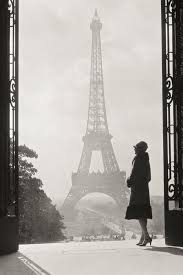 French impressionist composer Maurice Ravel (1875-1937) found inspiration in the American jazz, which was
French impressionist composer Maurice Ravel (1875-1937) found inspiration in the American jazz, which was  You may recognize the strangely catchy melody of Tea for Two by Tin Pan Alley songwriter Vincent Youmans and lyricist Irving Caesar. The song was written for the 1925 musical No, No, Nanette. One of its most interesting features is the sudden modulation from A-flat major to C major and the satisfying return back home to A-flat. The lyrics may have been intended to be temporary stand-in words. In the 1920’s and 30’s, shows were often loosely written around songs and comedy routines. The songs themselves were sometimes interchangeable. Later, Rodgers and Hammerstein would usher in a more plot-driven musical in which songs furthered the dramatic action.
You may recognize the strangely catchy melody of Tea for Two by Tin Pan Alley songwriter Vincent Youmans and lyricist Irving Caesar. The song was written for the 1925 musical No, No, Nanette. One of its most interesting features is the sudden modulation from A-flat major to C major and the satisfying return back home to A-flat. The lyrics may have been intended to be temporary stand-in words. In the 1920’s and 30’s, shows were often loosely written around songs and comedy routines. The songs themselves were sometimes interchangeable. Later, Rodgers and Hammerstein would usher in a more plot-driven musical in which songs furthered the dramatic action.